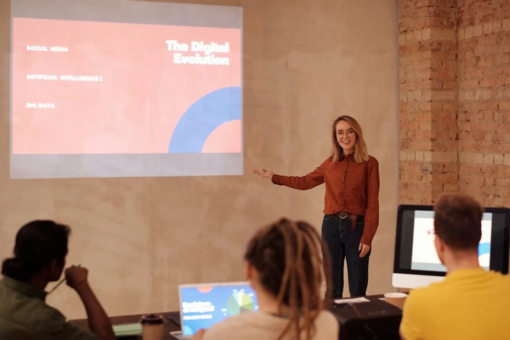When it comes to presenting data, there are many different ways to do it. Some methods are more effective than others, and some can be more confusing for the customer or client. In this blog post, we will discuss seven of the most common approaches to presenting data, and we will give you our opinion on which ones work best. Keep in mind that what works best for one business might not work as well for another, so you should experiment until you find a method that is right for you!

Presenting data to customers and clients – 7 approaches to try
As a business that profits from data, it’s important to present your findings in a way that the customer or client can understand. Moreover, as there are things at stake, in most cases, when presenting data, you have to make sure it is accurate and up-to-date. Experts from Zuar Company say that data presentation depends on the type of data you are presenting; and because data comes in many different forms, being able to choose the right approach is key. Here are seven approaches you can use to present data to customers and clients:
1. Data Visualization
This is one of the most commonly used approaches when presenting data. With data visualization, insights are presented in visuals such as charts, tables, graphs, or diagrams. This type of presentation makes it easy for customers and clients to absorb the information quickly, and it’s especially helpful when presenting complex data. Visualizing data is also a great way to identify patterns and trends in the data, which can help you make better decisions.
2. Storytelling
Storytelling with data is a great way to present information because it helps people better understand what the data means to them. With this approach, you provide context for the data by telling a story about how it affects your customers or clients. This can be done through videos, infographics, slideshows, and more. The tricky thing about storytelling is that you have to be careful not to oversimplify the data so that it’s understandable but still accurate and actionable.
3. Dashboards
Dashboards allow customers and clients to easily monitor data in real-time. They allow for easy access to current data as well as historical trends that can help inform future decisions. Dashboards are great for businesses with large amounts of data, as they make it easy to track metrics and monitor progress. Dashboards can also be used to trigger specific actions when certain conditions are met.
4. Narrative Reports
Narrative reports are a more detailed type of data presentation, as they provide a written explanation of the data being presented. With this approach, you can explain the implications of the data in a way that customers and clients can easily understand. If you have a lot of data to present, narrative reports can be the most effective way to do so.

5. Interactive Presentations
Interactive presentations are a great way to engage customers and clients with your data. This type of presentation allows them to explore the information more deeply, as they can interact with visualizations or ask questions in real time. If you are to do interactive presentations, you should make sure that your visualizations are easy to understand and that the data is up-to-date. More importantly, you should be prepared to answer any questions your audience may have.
6. Surveys and Polls
Surveys and polls are a great way to collect feedback from customers and clients about your data. You can use surveys to ask questions, test hypotheses, or gain insights into customer behavior. Surveys and polls can also provide valuable information about customer preferences, which can help guide future decisions. Conducting surveys and polls is an effective way to get customer feedback that can be used to improve your products or services.
7. Data Analytics
Data analytics is a powerful tool for understanding large amounts of data and uncovering insights that may have otherwise been missed. This approach requires an in-depth analysis of the data to identify trends, correlations, anomalies, and more. Data analytics can help you draw meaningful conclusions from the data, which can be used to inform decisions. One of the main benefits of this approach is that it can help identify potential problems or opportunities before they become a reality.
When it comes to presenting data to customers and clients, there is no one-size-fits-all approach. You should take the time to understand your audience and choose the approach that works best for them. With the right combination of data visualization, storytelling, dashboards, narrative reports, interactive presentations, surveys and polls, and data analytics, you can ensure that your customers or clients have all the information they need to make informed decisions.